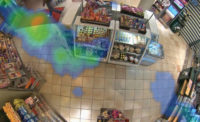Advanced technologies combined with lower costs have made outdoor perimeter video more accessible for more end users. So while critical infrastructure assets, including electrical substations, refineries and petrochemical facilities, remain the highest-profile applications for outdoor perimeter video, there are more and more opportunities for a security integrator to take advantage of in other sectors, as well.
And given the potential profits from these types of projects, why wouldn’t a security integrator want to seize these opportunities?
“If you know the products and technologies, have good relationships with the manufacturers and get your salespeople trained to know what’s out there, outdoor perimeter systems can be lucrative,” says says Brent Franklin, president of Chester Springs, Pa.-based Unlimited Technology Inc. (UTI), SDM’s 2014 Systems Integrator of the Year.
However, the reality is that regardless of how badly they’d like to get into or expand their presence in the perimeter video space, many integrators may not even get a seat at the table based on how they’ve positioned their companies.
“A lot of security businesses don’t promote themselves as outdoor perimeter intrusion specialists, so they may be working on a project and let other people come in to do that work,” Franklin concedes. “A lot of times a company will be using an integrator, but we get called in because they don’t have the experience.”
With perimeter video projects, success can breed success. For Springfield, Mo.-based NetWatch, which has been successful with these systems for more than a decade, business has a tendency to come to the company.
“A lot of what we do in perimeter security is need-based work. People come to us and say, ‘I have a big parking lot or I have a big field or I have a power substation that’s out in the middle of nowhere,’” says Matt Lackmore, president of NetWatch. “As an established business, opportunities come up. We’ve got a 10-year-old business with established clients, so we get referrals.”
While that works for NetWatch, integrators who may be trying to get into perimeter video or expand their offerings don’t have that luxury. For those integrators, Lackmore suggests looking at other options, such as end users who want perimeter surveillance to monitor parking lots where people sell cars, either dealerships or what are known as park-and-sells.
“If you’re taking a fresh approach to getting into perimeter surveillance, you might try to target those folks,” Lackmore suggests.
In fact, less traditional applications can be a main business focus, says Rob Simopoulos, president of Advance Technology, based in Scarborough, Maine. For example, he says, integrators could assist in protecting building perimeters where there are no fences with more proactive perimeter solutions.
“If you think about the traditional intrusion alarm system with motion detectors used to protect the inside of a building, it is designed to detect the intrusion once the perpetrator has entered the facility. Today, integrators can provide their customer a solution that will detect the perpetrator before they even reach the building,” he says.
Simopolous says his company has completed projects that involved installing cameras equipped with video analytics around the perimeter of a building, with the analytics programmed and set up to detect intruders as they approach the building. Once the camera detects the activity, it sends video clips to Advance Technology’s monitoring station or the end user’s security operations center for verification and response — which often prevents a potential intrusion before it can occur.
“In many cases these facilities are outfitted with outdoor speakers that allow the responding operator to perform a live talk-down to warn the trespasser to leave, which is often successful,” Simopoulos says. “If the perpetrator continues, the authorities can be notified and provided the knowledge that an individual is on site at the moment verified through the video system.”
Finding the Business
Outdoor perimeter video projects can be lucrative for integrators who can win them, but where do you look for prospects? The best resource could actually be sitting right under your nose. Casey Mustion, vice president of sales for NetWatch, advises integrators to take a good look at their existing customer base to identify those who are most likely to have issues with perimeter security and therefore have the greatest need for systems to address those issues. Some of those prospects may be obvious, while others may not exactly be top of mind.
“Of course you have utilities, but I would also look at manufacturing hard because they typically have large facilities with some inventory and/or equipment stored outside of the building,” he says. “I would also consider any type of food and drug processing locations as a possible fit because they are held to extremely high standards when it comes to securing their facilities. These facilities tend to be in industrial areas with reduced traffic at night, which also makes them susceptible to intrusion.”
Simopolous agrees that the field of potential prospects is wide open.
“Scrap metal dealers, heavy equipment and construction sites are great traditional locations, but there are so many other non-traditional opportunities,” he describes. “As an example, we recently met with a food processor who loaded product in a tractor trailer and then stored it on their property overnight, waiting for shipment in the morning. That single trailer had a value of over $200,000 of product in it.”
Pricing It Right
There are a number of variables that can — singularly or in combination — affect the price an end user and integrator have agreed upon for a perimeter video security project. Regardless of the cause, these variables can easily eat into an integrator’s profit margin for a project.
“Pricing is always difficult,” Lackmore says. “We use quality parts and have good staff. It takes a lot of time and money in training and vendor certifications, so we’ve got to charge enough to pay for all that.”
Non-employee labor costs are one variable that can deteriorate profits. Franklin says that most companies that are bidding on a perimeter project will use subcontractors for parts of a project, which might include electrical work, installing camera poles, and/or trenching for cabling.
“You have to make sure you’re capturing all aspects of the project, including the civil aspect,” he says. “If it’s a turnkey project, spell that out. If it’s not, put in the necessary exclusions and specify exactly what it is that customers need to do themselves.”
In the bidding process, integrators may be up against companies with very different skill sets that are able to submit much lower bids as a result, which Lackmore says can be frustrating.
“For traditional CCTV guys who come in, use coax cable, hang a camera and they’re gone, their price is going to be much lower. So a lot of times when we’re bidding against folks, it’s not an apples-to-apples comparison unless there are very specific bid specs,” he says. “The truth is that these systems are labor-intensive and require good people, and you have to pay for them.”
The best way to avoid potential unpleasant surprises, Lackmore says, is to have a good plan and choose good products for an installation, with special attention going to identifying the products that are going to stand up best to the elements.
RMR
In the security world, RMR is a magic word. Having a dependable stream of recurring revenue ensures ongoing success and increases the value of an integrator’s business. There is RMR to be found in perimeter video, but you have to look for it.
“Everybody is trying to find RMR, and depending on the product, you can increase the RMR piece with perimeter video,” Franklin says.
One example might be a setup that includes a camera installed on a pole that’s using solar power, video analytics and wireless transmission around the perimeter, he says. Naturally, an integrator can charge a monthly fee for the wireless connection and video analytics, but even the solar power, the pole and pretty much all the equipment can also generate RMR, either from a lease or monthly expenditure, Franklin explains.
“It really depends on the products, but if you’re smart about it, with the manufacturers today, you can insert RMR into pretty much any project,” he says.
Proactive technologies can help integrators generate that sometimes elusive ongoing revenue.
“Rather than just gaining profit on the project, offer proactive video guarding solutions that have a tremendous value to the customer and are a great way to gain RMR through monitoring services,” Simopoulos says.
Lackmore says his company’s standards for the products it installs are likely not helping NetWatch’s RMR cause.
“To some degree, the better quality the product, the higher the price the customer pays for that may hurt on the RMR side,” Lackmore says. “If you use good stuff and over-engineer, there’s going to be less maintenance.”
Still, NetWatch has found ways to generate ongoing revenue with even the highest-quality equipment. “Every so often we go out and do a cleaning. No matter how good they are, cameras are going to get dirty or dusty,” he says. “Even though these cameras may be sealed tight, somehow a spider is going to find its way in there or something like that. That’s an avenue an integrator can take to boost revenues.”





